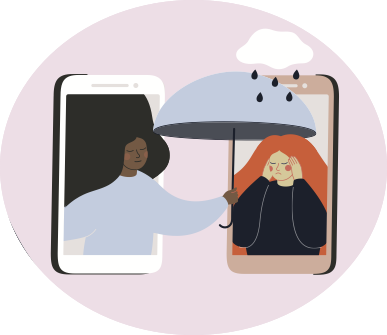Virtual Signs of Serious Mental Health Problems: A Teacher’s Guide to Protecting Students
 With much of education being delivered in a virtual environment during the pandemic, monitoring students’ mental health is harder, but more critical than ever. Some of the same indicators of distress apply as much in the virtual classroom as in the physical one, such as difficulty participating in class, poor attendance, frequently reporting illness and not completing assignments. But other indicators, such as on-screen interactions with family members and turning off the camera, are new to distance learning.
With much of education being delivered in a virtual environment during the pandemic, monitoring students’ mental health is harder, but more critical than ever. Some of the same indicators of distress apply as much in the virtual classroom as in the physical one, such as difficulty participating in class, poor attendance, frequently reporting illness and not completing assignments. But other indicators, such as on-screen interactions with family members and turning off the camera, are new to distance learning.
Virtual Signals of Mental Health Issues
In this new virtual reality, students experiencing trauma may still act out, but in different ways than they would in person. Arguing, refusing to work, communicating in verbally aggressive ways, or bickering with parents in the background during class are all signs to watch. Likewise, various forms of withdrawal—such as zoning out, not being mentally present when on camera, or struggling with short-term memory due to unhealthy coping patterns developed from stressful or traumatic life events—can serve as warning signs.
Another place to take note of mental health changes: students’ social media accounts. Posts that directly state any intentions to harm themselves or others obviously require immediate attention. But other red flags can be more subtle, such as statements about giving away things or about feeling hopeless.
Hopelessness is a major sign students are struggling with their mental health, and it can manifest verbally or nonverbally. In addition to revealing itself in social media posts, hopelessness can be communicated through actions such as not turning in assignments or appearing more disheveled on screen. Spotting signs of hopelessness is a pivotal step toward being responsive to students’ mental health needs.
Virtual Interventions
There are only so many things a teacher can see through the computer. Getting around that virtual barrier involves using exploratory conversations to help illuminate what might be going on in students’ lives.
Consistent check-in routines can provide opportunities for such conversations. On a daily or weekly basis, the teacher can gently ask some probing questions, such as, “What was most stressful about yesterday?” “Who in your family or online gave you the most energy to get through the day?” “Who—or what—made you feel the most disconnected from people around you?”
It’s a tall order, but teachers need to be able to identify the triggers that set their students off in different ways.
Virtual-Friendly, Trauma-Informed Curriculum
Educators need trauma-specific training that allows them to address the multiple tiers of support students require during challenges presented by a global pandemic and ongoing experiences of racial injustice. Part of that support can be found in a curriculum designed specifically to help educators identify and address racial inequality and mental health problems.
For example, the Bridge Trauma-Informed Culturally Responsive (TICR for short) curriculum gives educators the tools to detect virtual signs of mental health problems, identify the impact of individual trauma on students and staff, and implement trauma-informed and culturally responsive classroom strategies that promote students’ social-emotional health and academic achievement while supporting staff wellness.
By starting with a curriculum that takes a whole-child approach, respects the heritage of different cultures, and prioritizes well-being, schools can enlighten, engage and elevate both students and staff in order to respond to today’s virtual mental health challenges and support academic achievement through a trauma-informed culture.
Excerpted from “Virtual Signs of Serious Mental Health Problems: A Teacher’s Guide to Protecting Students.” Read the full article in EdSurge.
Source: EdSurge |Virtual Signs of Serious Mental Health Problems: A Teacher’s Guide to Protecting Students, https://www.edsurge.com/news/2020-10-07-virtual-signs-of-serious-mental-health-problems-a-teacher-s-guide-to-protecting-students | © 2011-2020 EdSurge Inc.
A screening can help you determine if you or someone you care about should contact a mental health professional. CHC teletherapy services are available now. Call or email our Care Managers at 650.688.3625 or careteam@chconline.org to set up a free 30-minute consultation appointment.





